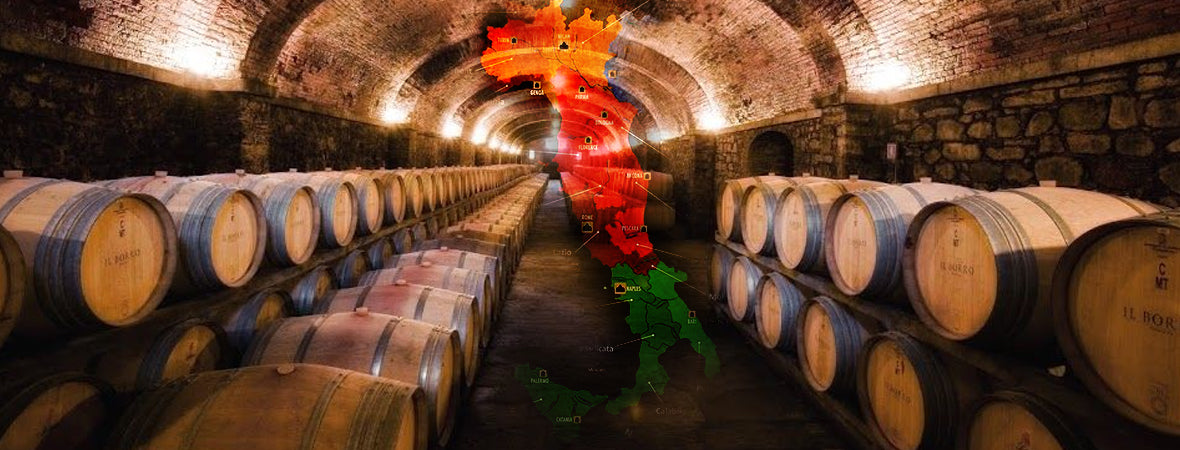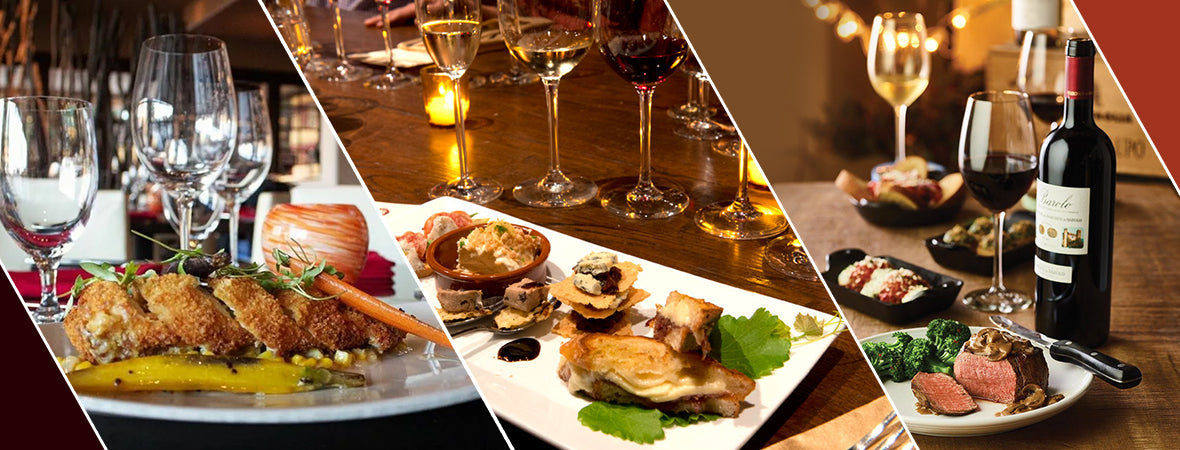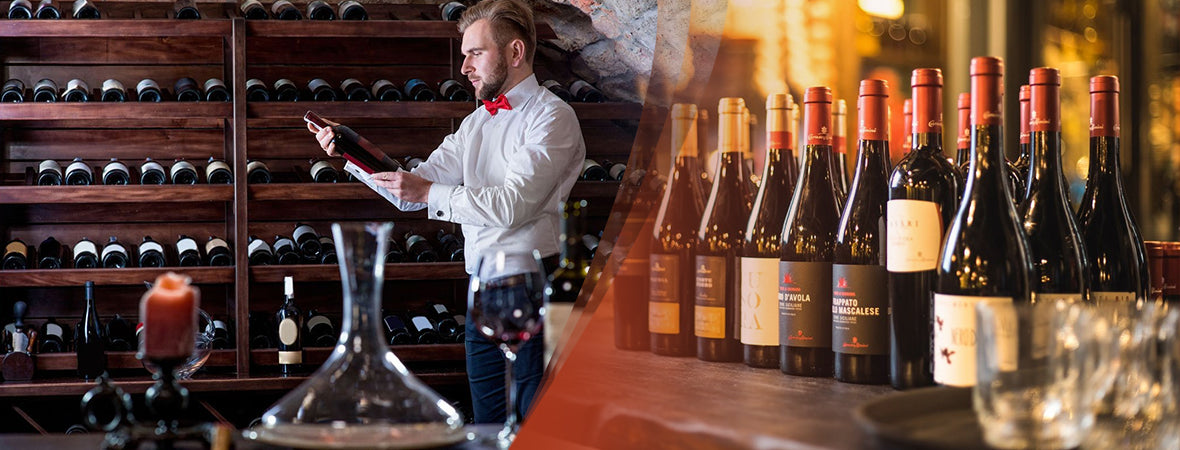Italy is one of the oldest producers of wine. There is probably not an inch of land across the whole country that you couldn’t grow grapes on and make a great wine. Wine was made even before the Romans mass produced and brought modern storage techniques to wine making around 2 B.C. There are many regions across the country and in order to see the distinction between the many different wines, it is important to learn about the regions they come from.
There are about twenty regions that produce wine. There are many factors involved which make Italy one of the best wine producing countries. Being surrounded by water makes for a great grape growing climate as well as the geographical topography with all the mountain ranges make for a variety of soil conditions. Italy is one of the world largest producer and consumers of wine. Italy’s twenty regions of wine are:
Aosta Valley, Piedmont, Liguria, Lombardy, Veneto, Trentino-Alto Adige, Friuli-Venezia Giulia, Emilia-Romagna, Tuscany, Umbria, Marches, Latium, Abruzzi, Molise, Campania, Apulia, Basilicata, Calabria, Sicily, Sardinia.
Aosta Valley is one of the smallest regions in Italy. Located in the northwestern corner that borders Switzerland and France, this region has a very rocky and mountainous terrain. Some of the red wine regions include: Arnad-Montjovet, Efner d’Arvier, and Chambave.
Piedmont has 52 Doc/Docg zones and is proud for having the largest percentage of it’s wines classified. Some of the more popular red wines include Barolo, Barbaresco and Dolcetto. Piedmonts white wines include Asti, and Moscato d’Asti.
Liguria has a rugged terrain which makes growing grapes a challenge and so their wines are limited but well worth trying to find with a distinctive taste.
Lombardy is better known for consuming more than producing wine due to the numerous industries in this region. The wines that come from Lombardy are actually very fine but often don’t get the recognition due to the import of neighboring wines.
Veneto or otherwise known as Venice is not only beautiful but also on it’s way to becoming a large producer of classified wines. Some of the wines produced in this region include Soave, Valpolicella and Bardolino. Venice also produces other wines that fall under the IGT classification.
Tentino - Alto Adige is in the northernmost region. The steep hillsides make it difficult to grow grapes and so more emphasis is concentrated on the quality of the wine. To the north is an area named Sudtirol where the majority of the people speak German.
Friuli -Venezia Giulia has borders on Austria and Solvenia. This regions produces some really good red wines and very distinctive white wines.
Wine regions such as: Friuli Isonzo, and Friuli Aquileia are located here.
Emilia-Romagna is one of northern Italy’s eccentric regions with a different style all on it’s own. The wine from this region has a refreshing different quality from the wine from other regions.
Tuscany is the land of award winning wines such as Brunello and the Super Tuscans. Regarded as the birthplace of the Italian Renaissance, Tuscany gained famed for such wines like Chianti, and Vino Nobile di Montepulciano.
Umbria is the green heart of Italy famed for its white wines such as Orvieto. Located east of Tuscany and north of Rome, this region has green pastures. Wines such as Falesco are found here.
Le Marche is a beautiful hilly wine region with miles of coastline. The town of Urbino where Raphael the famous painter was born has rustic mountains and postcard picture perfect fishing villages like Portonovo. Coined the new Tuscany, Le Marche is home of wines like Verdicchio di Matelica and Verdicchio.
Latium was once the center of the world. Also known as Lazio, this region has fertile foothills and valleys. Rome is located in Lazio and the region is known for wines such as Frascati, and Est! Est!! Est!!! di montefiascone. The soil has a volcanic history and is home to Malvasia and Trebbiano grapes.
Abruzzi is one-third hills and two thirds mountains was one of the first regions inhabited. Industrialized and produces the bulk of grapes which are used for blends. Most grapes are shipped north to other regions for producing. Montepulciano and Trebbiano are predominant but Abruzzi is gradually changing from bulk production to boutique production to make a quality product of their own.
Molise started gaining an official status in the early eighties. Often overlooked for other regions, Molise has the potential to compete with its neighboring Abbruzzi and Campania.
Campania has a glorious past. From the Romans to the Greeks, praised the high quality wines of Campania. From the volcanic soils near Vesuvius to the vineyards along the north coast, Campania has wines such as Anglianico, and Falanghina.
Apulia is home to dry well balanced red wines as well as white, sweet, and rose. Geographically the heel of Italy’s symbolic boot, Apulia produced strong blends of wines. Once nicknamed “Europe’s wine cellar” Apulia use to produce more wine than Sicily and Venice.
Basilicata has a cool climate for being located in the southern part of Italy. Basilicata also known as Lucania produces wines that have intense flavors and nice aromas. Wines such as Anglianico del Vulture is one wine Basilicata can be proud of.
Calabria is a mountainous region that forms the toe on the boot of Italy. Having a mixed climate produces two grape varieties such as Greco and Gaglioppo. One of the more popular wines are Ciro.
Sicily is the largest island in the mediterranean. Sicily produces Marsala, used in cooking. Once possessing more vineyards than any other region, Sicily is now focusing more on quality than quantity. Sicily is home to wines such as Colossi Rosso, and many dessert wines. A majority of the grapes are turned to raisins and used in local cooking.
Sardinia has a history influenced by many cultures. Spaniards inhabited this isolated island. Producing Moscato, Malvasia, Giro, Cannonau, and Vernaccia di Oristano, Sicily has ancient geological formations from the Palaeozoic era.
I think every region of Italy is an endless adventure of taste and well worth exploring. As always this is Billy Wineheart wishing you good food, good friends and good wine.





